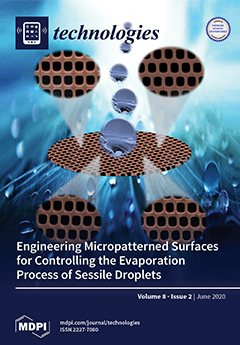One of the promising processing methods for non-conductive structural and functional ceramics based on ZrO
2, Al
2O
3, and Si
3N
4 systems is electrical discharge machining with the assistance of an auxiliary electrode that can be presented
[...] Read more.
One of the promising processing methods for non-conductive structural and functional ceramics based on ZrO
2, Al
2O
3, and Si
3N
4 systems is electrical discharge machining with the assistance of an auxiliary electrode that can be presented in the form of conductive films with a thickness up to 4–10 µm or nanoparticles - granules, tubes, platelets, multidimensional particles added in the working zone as a free poured powder the proper concentration of which can be provided by ultrasound emission or by dielectric flows or as conductive additives in the structure of nanocomposites. However, the described experimental approaches did not reach the production market and industry. It is related mostly to the chaotic development of the knowledge and non-systematized data in the field when researchers often cannot ground their choice of the material for auxiliary electrodes, assisting powders, or nano additives or they cannot explain the nature of processes that were observed in the working tank during experiments when their results are not correlated to the measured specific electrical conductivity of the electrodes, particles, ceramic workpieces or nanocomposites but depends on something else. The proposed review includes data on the main electrophysical and chemical properties of the components in the presence of heat when the temperature in the interelectrode gap reaches 10,000 °C, and the systematization of data on ceramic pressing methods, including spark plasma sintering, the chemical reactions that occur in the interelectrode gap during sublimation of primary (brass and copper) and auxiliary electrodes made of transition metals Ti, Cr, Co, and carbon, auxiliary electrodes made of metals with low melting point Zn, Ag, Au, Al, assisting powder of oxide ceramics TiO
2, CeO
2, SnO
2, ITO, conductive additives Cu, W, TiC, WC, and components of Al
2O
3 and Zr
2O workpieces in interaction with the dielectric fluid - water and oil/kerosene medium.
Full article





